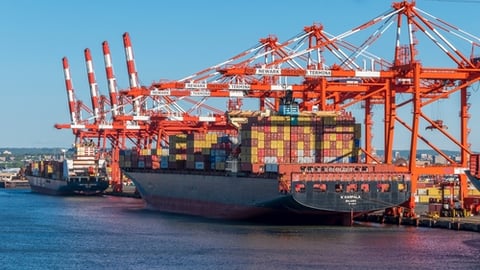Imports Continue To Grow Over Tariff Concerns
Import levels at the nation’s major ports continue to grow as retailers remain concerned over additional tariffs on a host of products, according to a new report from the National Retail Federation (NRF).
The monthly Global Port Tracker from the NRF and Hackett Associates showed that U.S. ports covered in the report handled 2.17 million Twenty-Foot Equivalent Units (TEU) – one 20-foot container or its equivalent – in November. That was down 3.2% from October but up 14.7% year-over-year. The data does not include final data from the Ports of New York and New Jersey.
Ports have not yet reported December’s numbers, but Global Port Tracker projected the month at 2.24 million TEU, up 19.2% year-over-year. That would bring 2024 to 25.6 million TEU, up 15.2% from 2023. Before the October port contract extension and the 2024 elections, November had been forecast at 1.91 million TEU and December at 1.88 million TEU, while the total for 2024 was forecast at 24.9 million TEU.
January is forecast at 2.16 million TEU, up 10% year-over-year; February at 1.87 million TEU, down 4.5% because of Lunar New Year factory shutdowns in China; March at 2.13 million TEU, up 10.6%; April at 2.18 million TEU, up 8%, and May at 2.2 million TEU, up 5.9%.
While port traffic is forecast to remain robust, NRF officials also expressed relief over the new contract agreement between the International Longshoremen’s Association and the U.S. Maritime Alliance, which avoided a work stopped at East and Gulf Coast ports.
“The new contract brings certainty and avoids disruptions, and we hope to see it ratified as soon as possible,” said Jonathan Gold, vice president for Supply Chain and Customs Policy with the NRF. “But the agreement came at the last minute, and retailers were already bringing in spring merchandise early to ensure that they would be well-stocked to serve their customers in case of another disruption, resulting in higher imports.”
He noted the surge in imports has also been driven by President-elect Donald Trump’s plan to increase tariffs since retailers want to avoid higher costs that will eventually be paid by consumers.




